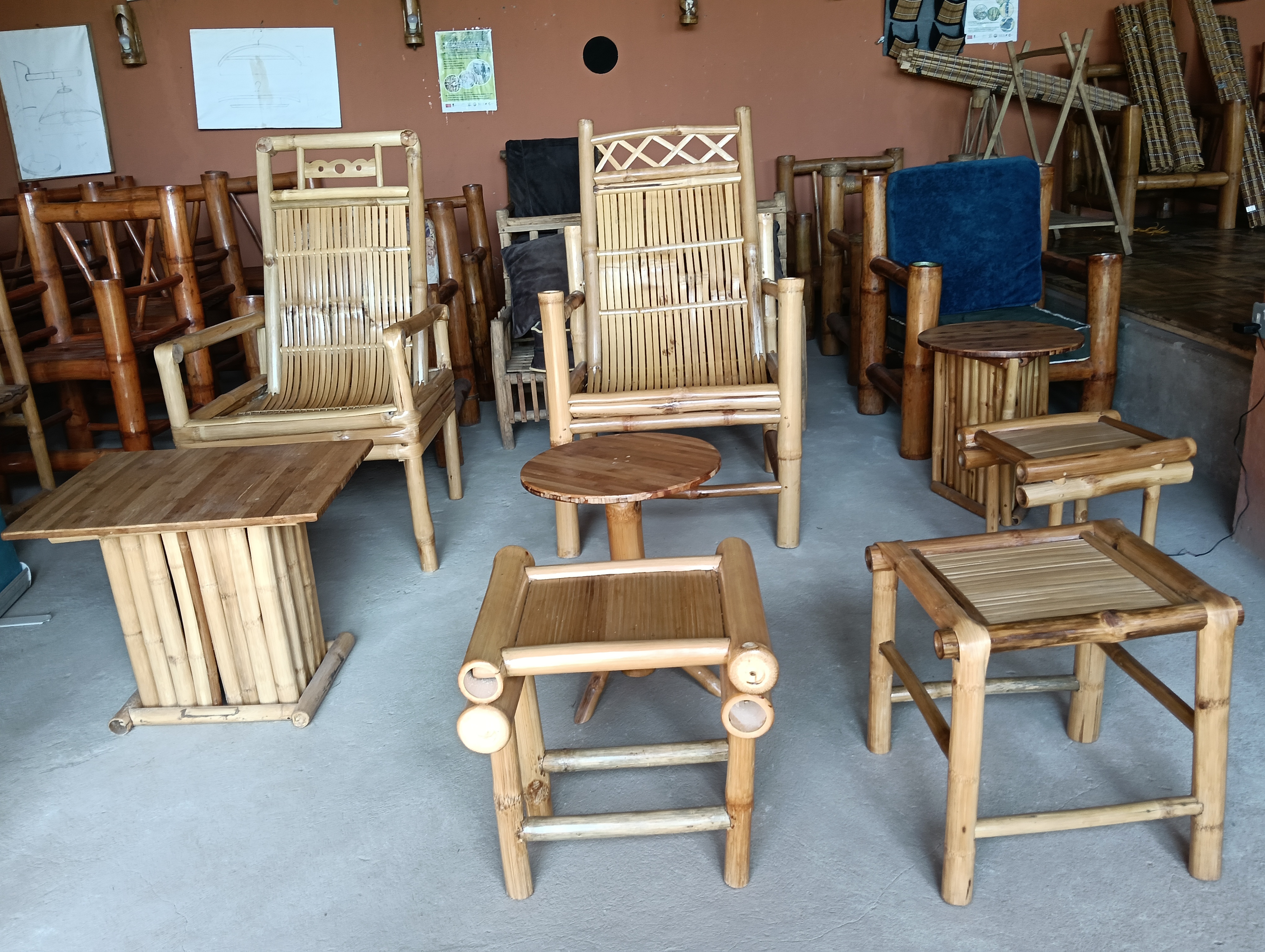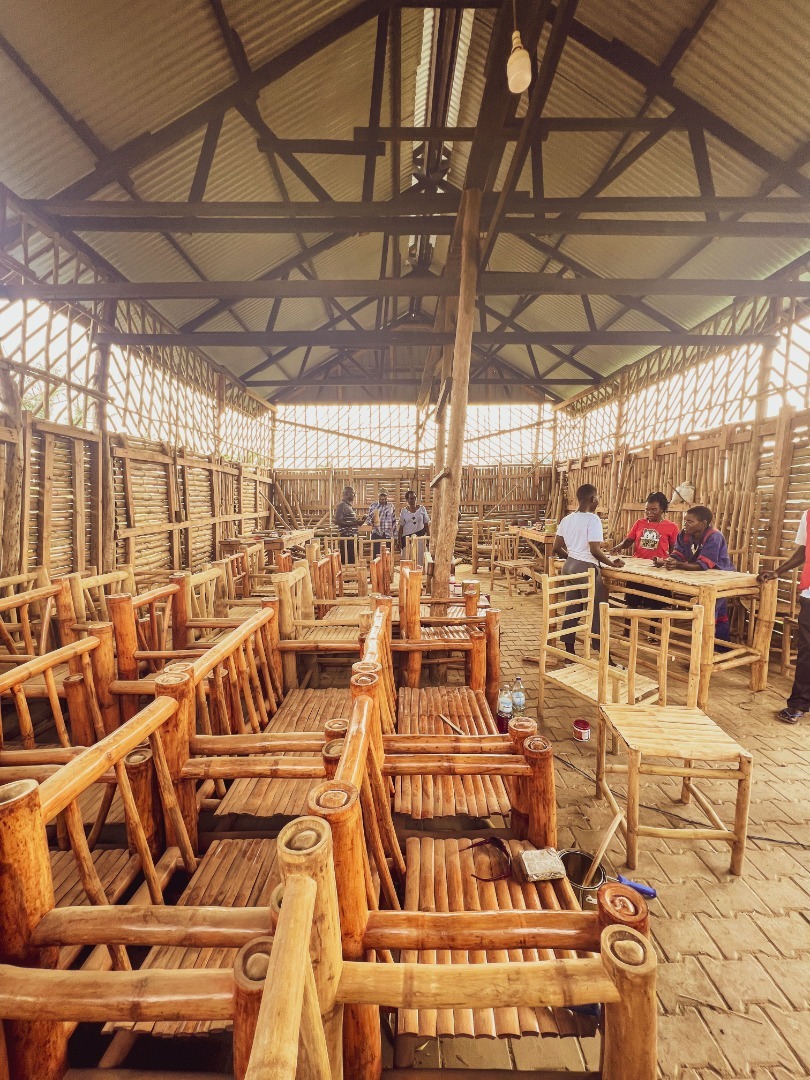Green Gold: Could bamboo save Ugandan forests?
Discussion details
It’s no secret that Uganda’s forests are at threat. In the period 2000 to 2020 the country lost around 0.8 million hectares or 25 percent of its forest cover. Despite an impressive increase of commercial tree plantations, also thanks to EU support, land conversion, charcoal production and illegal logging continue to wreak havoc in natural forests.
The Ugandan government is committed to increasing forest cover to 24 percent by 2040, up from the current 15 percent. Under the terms of the 2022 EU-Uganda Forest Partnership and the NCDs, the country also aims to reduce carbon emissions by 22 percent, increase the number of sustainable forest-related jobs and crack down on the illegal timber trade. But progress is slow, and Prime Minister Robinah Nabbanja acknowledges urgent action to halt deforestation is essential. “Recovery is fragile, and continued deforestation could quickly reverse the gains made, leading to severe consequences for Uganda’s people and environment,” she says.
Bamboo, the miracle plant
Against this continuing uncertainty, conservationists and some forestry experts are pinning their hopes on bamboo. Known as ‘green gold’ because of its rapidly increasing environmental and economic value, bamboo is being hailed as a sustainable, nature-based solution with the potential for boosting rural livelihoods whilst cutting CO2 emissions. Bamboo has even been hailed by some as the ‘new plastic’ as bamboo-derived nanocellulose is said to be safer, stronger, and more flexible than plastics made from fossil fuels.
“Bamboo can help Uganda deal with the serious problems of deforestation and forest destruction,” says Selim Reza, a sustainable development expert and former Regional Programme Manager for the International Bamboo and Rattan Organisation (INBAR). “Bamboo grows fast. Within two to three years of planting, it is protecting soil run-off, improving biodiversity and helping to mitigate climate change. Bamboo can be used as an alternative for fuel or wood charcoal. It really is a miracle plant to curb deforestation and improve livelihoods.”
According to INBAR, there are more than 1,600 different varieties, some of which grow to an astonishing 35 metres tall and 30cm across. In ideal conditions, some species grow up to 90cm a day, making an ideal alternative for timber construction. That’s a significant consideration in Uganda, which as we reported last year is experiencing a boom in timber house building. In response, Uganda aims to plant 300,000 hectares of bamboo, most of it on private land, by 2029. This ambition shows the government’s interest, however achieving it is doubtful, as the current bamboo area lays around 60,000 hectares, of which 55,000 are natural bamboo forest. The bamboo planted area is growing since 2015, to an estimated 4,500 hectares.
“As part of the 10 year bamboo strategy, the Ugandan government allocated dedicated land for planting bamboo but so far only on a small portion of that land bamboo has actually been used,” explains Pieter Huys, co-founder of Amabanda Uganda and a member of Bamboo Uganda, a non-profit network of supply chain actors. “In Uganda there is still a lot of bare and degraded land — mainly in the North and East of the country — that is not suitable for agriculture for the moment. These are perfect locations to plant bamboo at a larger scale to improve soils and create livelihoods for local communities.”
Sustainable bamboo value chains
With the EU Regulation on Deforestation-free Products (EUDR) due to come into force at the end of 2025, Uganda is ramping up efforts to develop sustainable and deforestation-free value chains for both timber and coffee. Bamboo and bamboo products are exempt from EUDR and so could play a significant role, but exports have so far been limited. “Currently, the sector has a fragmented value chain,” says Selim. “The existing actors are mostly active in independent roles and responsibilities, and they lack cooperation and coordination. Since Uganda is a landlocked country, it needs government and donor support to strengthen the current value chains in terms of encouraging private sector investment, and encourage multi-supply chains.”
With the bamboo sector still in its infancy, he adds, farmers need hands-on support. “They need suitable planting materials at reasonable rates, connections to reliable markets, skills and technology for value addition / product development and trusted export partners. Sometimes, farmers are misled by investors when it comes to support and promises about buying bamboo poles — and that creates resistance.”
Bamboo — long with rattan and health product ingredients — is one of the non-wood products the EU is keen to promote as a promising sector for sustainable growth and trade. A recently-published factsheet from the EU Global Gateway identifies sustainable and inclusive forest-based value chains as ‘key to a new EU approach to forests’ which aims to create more formal forest jobs, more value and revenues, new sustainable wood and non-wood sectors, and legal deforestation-free production and trade.
One man who has already embraced the potential of sustainable bamboo is Charles Koojo, founder of Kontiki Bamboo in Uganda’s Western Rift Valley. Promising “sustainability through green circular economy, eco-sound products and improved livelihoods”, Kontiki is nothing if not ambitious. “Kontiki is not just about manufacturing; it's about revolutionising the entire value chain, from nursery to plantation to factory,” says the company website.
“When I was growing up there were lots of forests near my village, but of late they have been degraded at a very fast rate for farming and charcoal burning for cooking,” says Charles. “I realised that a sustainable bamboo value chain would be a practical contribution to community livelihoods, reversing climate change and conserving the environment. I am a passionate advocate for encouraging people to grow bamboo. We add value for the farmers and also market our products both locally and internationally as there is demand for ecological products.”
Known as ‘Doctor Bamboo’, Charles’ vision is part of Kontiki’s broader strategy to support regional reforestation through the Bamboo Per Household Initiative which aims to plant 100 million bamboo seedlings across Uganda, creating 50,000 new jobs over the next 5 years.
“The future is very bright,” says Charles. “Bamboo is socially, economically and environmentally sustainable.”
That sentiment is echoed by INBAR’s Selim Reza. “The national government has committed to promote the bamboo sector. Bamboo encourages green investment, green financing and green jobs. I am hopeful that Uganda will play an important role in the bamboo sector in the near future through strengthened value chains.”
Bamboo: too good to be true?
Does the green gold sounds too good to be true? Supporters say there are few, if any downsides to commercial bamboo farming. “There is no evidence that planting bamboo could increase deforestation or reduce biodiversity,” says Selim. “Bamboo improves degraded lands and enhances biodiversity. It provides food for mountain gorillas, chimpanzees and other wildlife.”
“There’s no danger,” agrees Charles. “Bamboo is completely sustainable — in fact the more you practise sustainable harvesting, the better quality and quantity of bamboo you get. Biodiversity increases, soil quality improves and soil erosion is reduced.”
Some farmers, however, remain unconvinced. “Planting without a proper management strategy is what has given bamboo a bad reputation among farmers in Uganda, especially those with small plots of land,” says agriculture and science journalist Lominda Afedraru. “Many farmers fear to plant bamboo because it will ‘steal’ or ‘grab’ their land. The relatively high cost of bamboo seedlings — around US$1.50 apiece — is another significant barrier, while most do not understand the advantages of planting bamboo. Farmers in Uganda neglect their soils, which are washed away during heavy rains. Bamboo has long, fibrous, shallow growing roots that are able to stabilise soil and prevent erosion. People living in mountainous areas should plant bamboo to protect their soils.”
Despite these challenges, it’s clear that bamboo can play an important part in Uganda’s transition from the ugly face of deforestation to the poster child of sustainable forestry. The government’s 10 year bamboo strategy and several programmes (INBAR, EU) and private initiatives promote a more professional and structured bamboo sector. “For the sector to really deliver on its promises (job and revenue generation at scale) producers need to be sure of markets and find customers for their bamboo poles for a profit-making price”, says Jochem Schneemann from the EU-funded Forests for the Future Facility (F4F), who is leading a feasibility study to develop forest-based value chains in several countries. “It will require some efforts to select and develop competitive products, both domestically and for export. This sector needs a conducive and stable regulatory environment for value chains to be developed.”
Strengthening the EU-Uganda Forest Partnership
The EU is not the only trading partner showing interest in this potentially lucrative market. The Chinese embassy in Kampala is training at least 30 Ugandans on bamboo charcoal processing and the two countries recently entered into a bilateral bamboo industry technical cooperation. For now, the EU is focused on supporting Uganda in its transition from de- to re-forestation. The EU-Uganda partnership was strengthened in 2024 when the EU made a further €40 million available in grant financing to the government of Uganda, including €15 million for a Sustainable Wood-Based Value Chains initiative to help the country’s forestry sector contribute more sustainably to the economy and the environment. The partnership has set ambitious targets, including the restoration of 400,000 hectares of degraded forest, the creation of 150,000 new jobs and a reduction in deforestation by 20,000 hectares each year.
“We must work together to protect our forests, support local communities, and promote sustainable development,” Dr Alfred Okot Okidi, Uganda’s Permanent Secretary of the Ministry of Water and Environment told a recent visiting EU delegation. “The EU-Uganda Forest Partnership is a critical step towards achieving our goals, and we look forward to continuing our work together. Forests are a critical component of our ecosystem, providing livelihoods for millions of people, supporting biodiversity, and mitigating the effects of climate change.”
Other African nations including Nigeria, Ethiopia and Kenya are also eyeing bamboo’s social, economic and environmental potential. “Africa’s bamboo moment has arrived,” writes agribusiness consultant Laja Adesina in a recent blog.
“In the heart of Africa’s quest for sustainable growth lies a plant that has been underestimated for decades — bamboo. Bamboo is not the future — it is the now.”



Log in with your EU Login account to post or comment on the platform.